By Hannah Wallace
When Rukaiyah Adams took the podium at Nike World Headquarters in Beaverton, Oregon, two weeks ago to announce Phil and Penny Knight’s $400 million donation to the 1803 Fund her voice wavered with emotion. It’s understandable why: Thanks to the contributions of the Nike founder and his wife, the scale of the assets she’ll be managing as chair of the newly formed fund will be game-changing for Portland’s Black community, which her family has been a part of for four generations.
“At $400 million, I’ll be managing almost more than all Black women in venture capital,” Adams tells me by phone a week later. “I don’t think there’s a Black woman who has ever raised more than a few million dollars for a historically Black community.”
The 1803 Fund, a public benefit nonprofit, is dedicated to rebuilding and strengthening the historically Black community in North and Northeast Portland. “It’s like a private equity fund for the people,” Adams says. The fund will have three focus areas: education, culture and belonging, and place. Its first project, Rebuild Albina, is focused on investing in the Black neighborhood that was partially razed in the 1950s to make way for Memorial Coliseum, I-5, and Legacy Emanuel Hospital, displacing a vibrant business district and residential community of bungalows, jazz clubs, corner groceries, and churches.
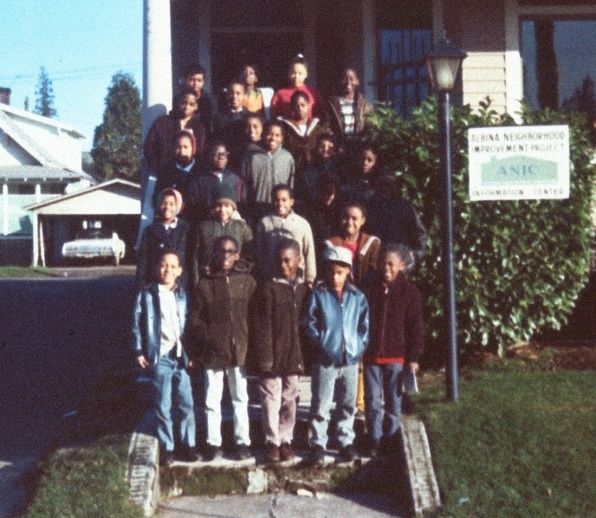
Adams says the idea for the fund came about gradually. She and two other leaders of Portland’s Black community—Tony Hopson Sr., founder and CEO of youth development organization Self Enhancement Inc. (SEI), and Ron Herndon, founder of the Portland chapter of the Black United Front and CEO of Albina Head Start—began conversations with Knight nearly three years ago.
“It wasn’t clear if Mr. Knight would be the solution, but we knew that the conventional model of short-term funding for long-term problems was not working,” Adams says. “And we knew that our communities, during hard times, struggle more. We were hyper-sensitive to what was going on.”
Portland was hit hard during the pandemic. The city is struggling with an out-of-control homelessness crisis and high rates of drug addiction, mental illness, and gun violence. (In 2021 and 2022, homicide rates set new records, exceeding even the worst of the crack cocaine epidemic.)
Adams, the former chief investment officer at Portland’s social and economic justice-focused Meyer Memorial Trust, has deep roots in the Walnut Park neighborhood of North Portland. She attended a local Head Start nursery school, and public elementary and middle schools before landing an academic scholarship to a private high school. From there, she went to Carleton College, Stanford Business School, and then Stanford Law.
Adams spent two years as director of investment management financial services group the Standard, during which time she became chair at the Oregon Investment Council, which oversees the state pension investments. In 2014, she moved on to Meyer, the fourth-largest foundation in Oregon, where over eight years, she grew the endowment to $1 billion. A few years ago, a group of Portland leaders urged Adams to run as a write-in candidate against incumbent mayor Ted Wheeler. She declined.
It was Hopson who started the conversation in the aftermath of George Floyd’s murder and the nightly Black Lives Matter demonstrations in Portland. He asked his friends Phil and Penny Knight if they would make a transformational donation to Portland’s Black community. (Nike was the first corporate sponsor of SEI, in 1983, and the Knights have both personally provided support to the nonprofit as well.)
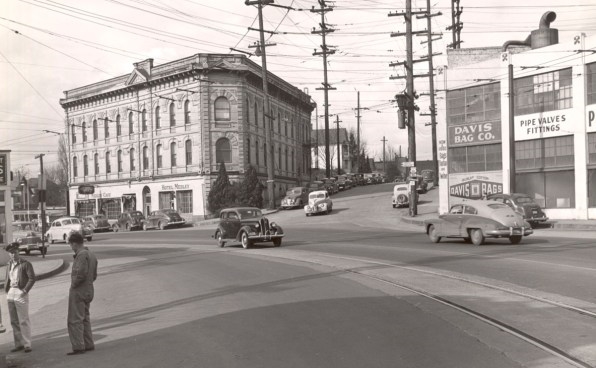
“I found the courage enough to ask Phil: Would he and Penny personally consider a much larger gift, that could not only make a difference but could potentially make the difference in Portland’s Black community?” Hopson recalled, speaking from the dais at Nike. “I was thinking of a concentrated effort—quality and quantity. I shared with Phil that we already know what our community needs. But we have never—and I mean never—had the long-term capital to address the long-term challenges. A focused, stable, and consistent source of funding for the most effective Black organizations and transformational projects.”
Knight didn’t say no. That’s when Hopson called in two people who he knew were as committed to the Albina community as he was: Adams (an SEI alumnus—she participated in summer academic and basketball programs through high school) and Herndon.
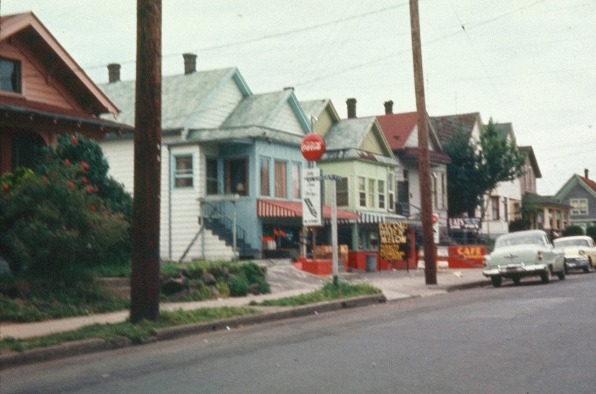
Albina, which was a fast-growing city in the 1880s, was annexed to the City of Portland in 1891. Around 1910, many Black Portlanders began to move to what was the “lower” Albina area and near where Memorial Coliseum is today. After World War II, a large influx of Black workers moved to Portland for jobs, settling in this thriving Black district.
Meanwhile, in 1942, a large planned development called Vanport was created in North Portland for shipyard workers, many of whom were Black. Six years later, the disastrous Columbia River flood wiped out the town of Vanport, and many of its Black residents moved to the Albina district.
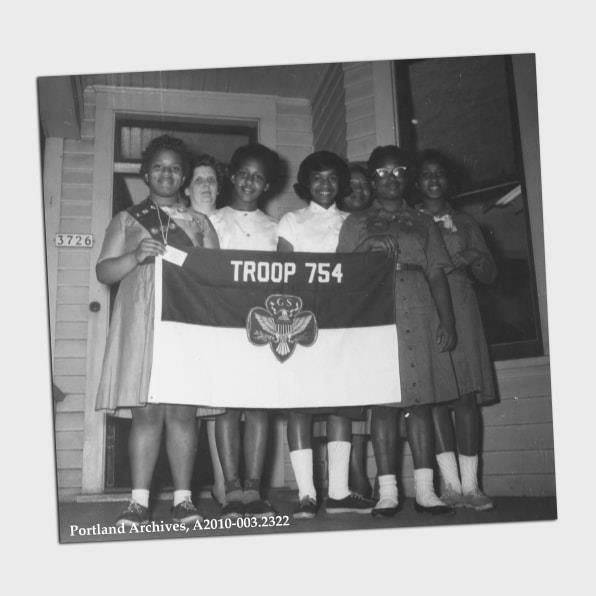
By 1960, the year Memorial Coliseum opened, 80% of Portland’s Black population lived in Albina. Hundreds of families were displaced by the construction of the Coliseum, 224 of them non-white. Two years later, the Oregon State Highway Department carved Interstate-5 through the heart of the neighborhood, demolishing more than 300 homes.
If that weren’t enough, in 1967 Emanuel Hospital announced plans for a new medical campus in the neighborhood, and cleared the land of more than 200 properties. This trifecta of urban renewal developments obliterated the community—some families were displaced more than once.
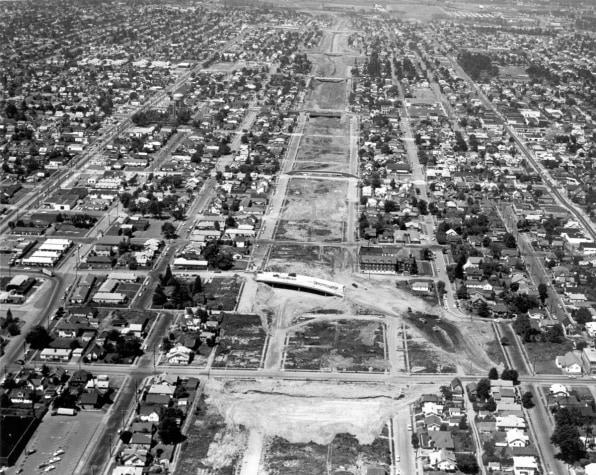
Adams isn’t ready to offer specifics on the 1803 Fund’s investments—in part because she and her board are still in the early stages of hiring staff and refining details. But she’s clear that it will include real assets, and back companies as well as community-based organizations.
“At this point, we know there will be some community partnerships and we know there will be some financial investment partnerships,” she says. “This is just conventional private equity investing. The twist is that we will be making community investments at the same time in furtherance of our capital investments. As opposed to, say, just having a real estate private equity fund that comes in, buys up a bunch of land, improves it, and makes a bunch of money without dealing with the consequences or externalities that have been created as a result of it.”
Adams hints at a few possibilities. “The waterfront comes to mind for me. We haven’t had a real asset partner join into the Superfund transformation of the river,” she says, referring to the 23-year-old project to remediate a 10-mile stretch of the Willamette River that was contaminated by heavy industry, the U.S. military, and the Port of Portland. Most populations of color in Portland are located near the Superfund stretch of the river. “So remediating that will be really important to improving quality of life and the commonwealth.”
Adams also has her eye on affordable housing, but with a caveat. “Affordable housing alone isn’t a solution,” she says. “It has to be communities designed around the life of the kinds of people who live there.” To that end, she’s thinking about transit and how people who are not wealthy can live car-free lives. “Imagining Black elders who could live in North and Northeast Portland the way that people live in the [predominately white and upper-class] Pearl . . .” she says, her voice trailing off.
Adams sees an opportunity to rebuild the neighborhood formerly known as Lower Albina—where fewer than 2,000 people currently live—with an eye toward advantage and opportunity. “As we rebuild that part of the city, we could implement requirements for broadband and climate adaptability and a number of other things,” she says. “We could create a community that closes the gap for a lot of issues around urban spaces and design, from the beginning.” Adams is also a board member of the Albina Vision Trust, a nonprofit that seeks to redevelop Lower Albina with affordability, walkability, and economic inclusivity in mind.
This is Adams’s first encounter with Knight. “He and I have been swirling around each other for years,” she says. Adams attended SEI and Albina Head Start, both of which Knight (and Nike) supported. He’s also a graduate of Stanford Business School, and gave a big gift to the school while Adams was a student there. “I told him recently, if he’s ever wondered what the cumulative effects of his philanthropy are, I’m one of those cumulative effects,” she says.
A longtime Republican, Knight also frequently donates to Republican candidates. Last year, he gave a total of $1.5 million to Christine Drazan, the Republican candidate for Oregon governor who lost to Democrat Tina Kotek. Most recently, he gave $2 million to a PAC that aims to elect Republicans to the Oregon Legislature.
In 2012, Governor John Kitzhaber called a special session of the Oregon Legislature to vote on a sweetheart deal for Nike: a 30-year promise that the multinational company would be taxed only on profits on sales made within the state. (Kitzhaber said he feared Nike would go elsewhere if the state didn’t guarantee this “single-sales factor,” a method of calculating Oregon’s corporate income tax.) The sportswear company is also known for not paying its federal income taxes.
Does it seem ironic that Knight would donate so much money for a good cause when his company doesn’t pay its fair share of taxes? “I’m not going to comment on that,” Adams dodges, when asked. “The one thing I feel acutely sensitive to is that we have to be effective. We can’t just give money away, right? We can’t just have short-term goals. We actually have to be good stewards of the wealth, we have to share it in community that drives specific outcomes that are measurable and valuable.”
Knight has not asked for any formal oversight or engagement, but Adams says her board, which includes Hopson, Herndon, Nike CEO John Donahoe, and Larry Miller (the chairman of the Michael Jordan brand), is comprised of “world-class business folks,” adding, “There will be very good oversight.”
Knight’s handshake deal with cofounder Bill Bowerman to create Nike happened in Lower Albina, and it was the neighborhood where the sportswear company opened its first factory store in 1984. (Herndon played a role in that investment too.) “Knight was a young man during the years the Coliseum went up,” Adams says. “He saw the community destroyed. So he’s always been deeply connected to the neighborhood.”
One thing that Knight, Adams, Hopson, and Herndon discussed again and again in their conversations about what this fund would look like is that the traditional systems in America are failing. “We’re having these intersecting government failures and policy failures and, in the case of affordable housing, market failures,” Adams tells me. “We need new conveners. We need more visionary capital. Like, something has gotta change! We need someone to try to give it a try. And that’s what we’re aspiring to do—give it a try.” If the 1803 Fund team had a slogan, it would be a familiar one: Just do it!
And Knight’s donation, though monumental, is just the beginning. Adams was in California last week meeting with potential donors. “There’s not anything I can talk about publicly yet, but we’d ultimately like to get to $850 million or $1 billion,” she says. “This kind of wealth brings up an authority and a permanence that we’ve never had.”
(15)